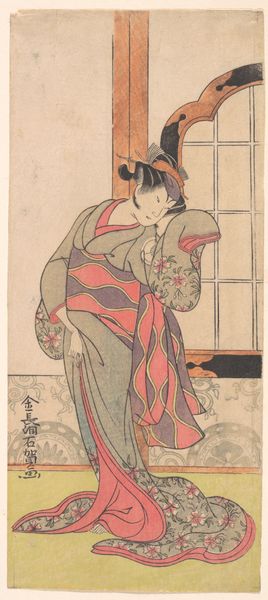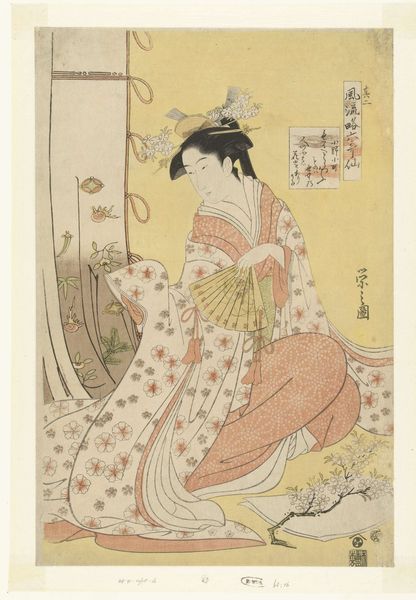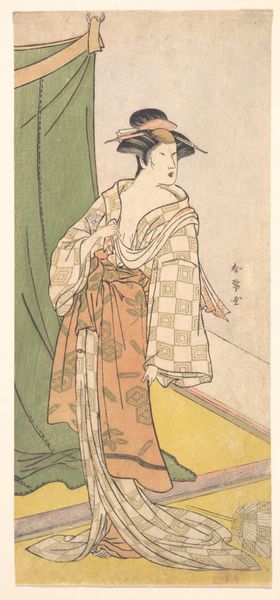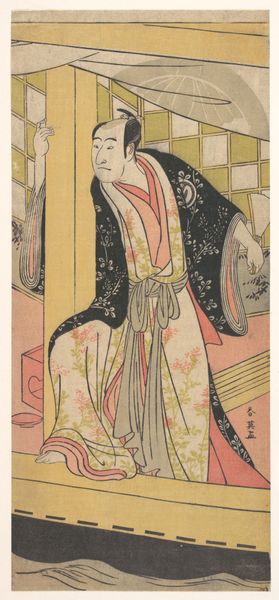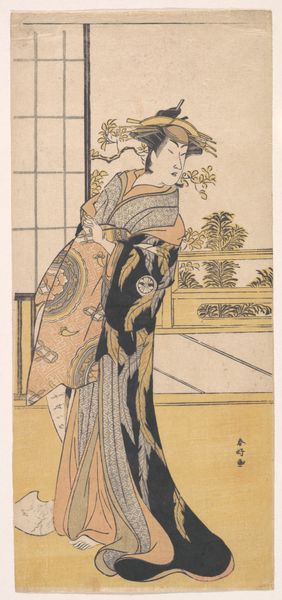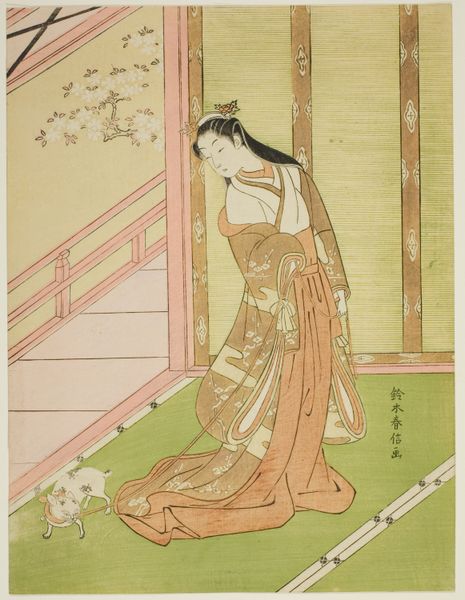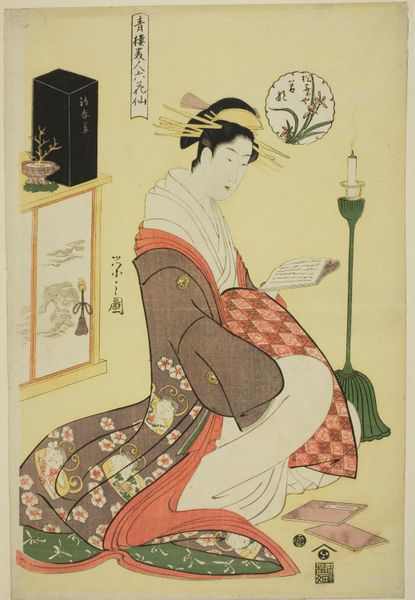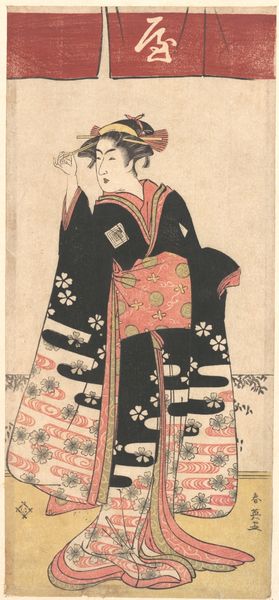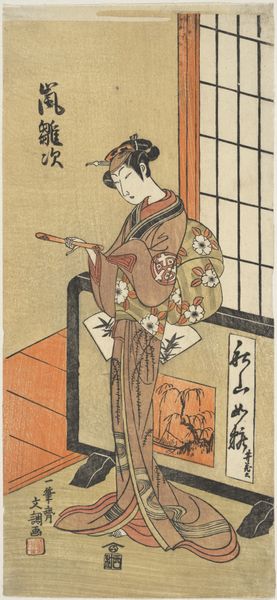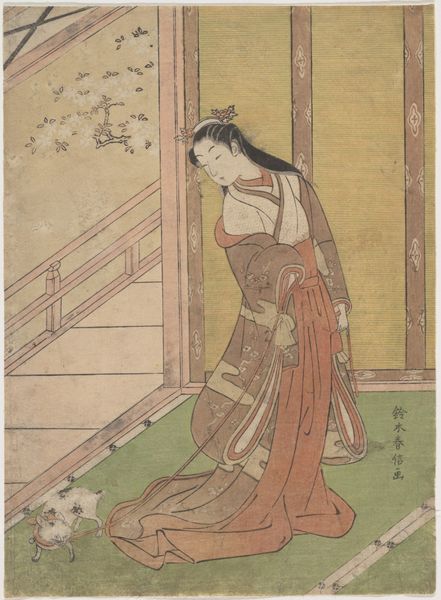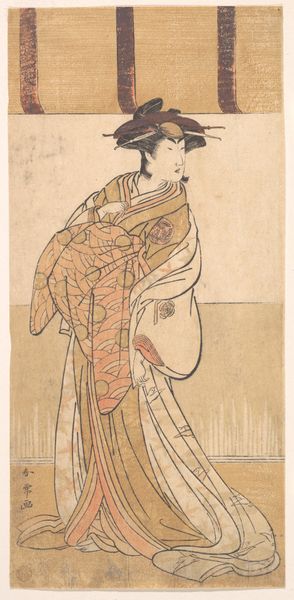
The Actor Sanogawa Ichimatsu III in a Female Role, Possibly Masago Gozen in the Play Keisei Azuma Kagami (A Courtesan's "Mirror of the East") (?), Performed at the Nakamura Theater in the Second Month, 1788 c. 1788
0:00
0:00
#
portrait
# print
#
asian-art
#
ukiyo-e
#
figuration
Dimensions: 32.9 × 14.9 cm (12 15/16 × 5 7/8 in.)
Copyright: Public Domain
Katsukawa Shunko created this woodblock print in 1788, depicting the actor Sanogawa Ichimatsu III in a female role. During the Edo period in Japan, Kabuki theater was a vibrant space, although fraught with social complexities. Male actors, like Ichimatsu, often played female roles, a practice rooted in historical bans on women performing on stage. This convention created a unique space for exploring gender and identity. Shunko, as an artist, played a role in immortalizing these performances. Here, Ichimatsu embodies, perhaps, Masago Gozen, a courtesan, in a moment of reflection. The print captures the actor's emotional depth and the constructed nature of gender. What does it mean to perform a gender? What does it mean when the performance is so convincing that it carries an emotional weight? Consider how this image blurs the lines of identity, reflecting both the performative aspects of gender and the complex social fabric of Edo-period Japan.
Comments
No comments
Be the first to comment and join the conversation on the ultimate creative platform.
